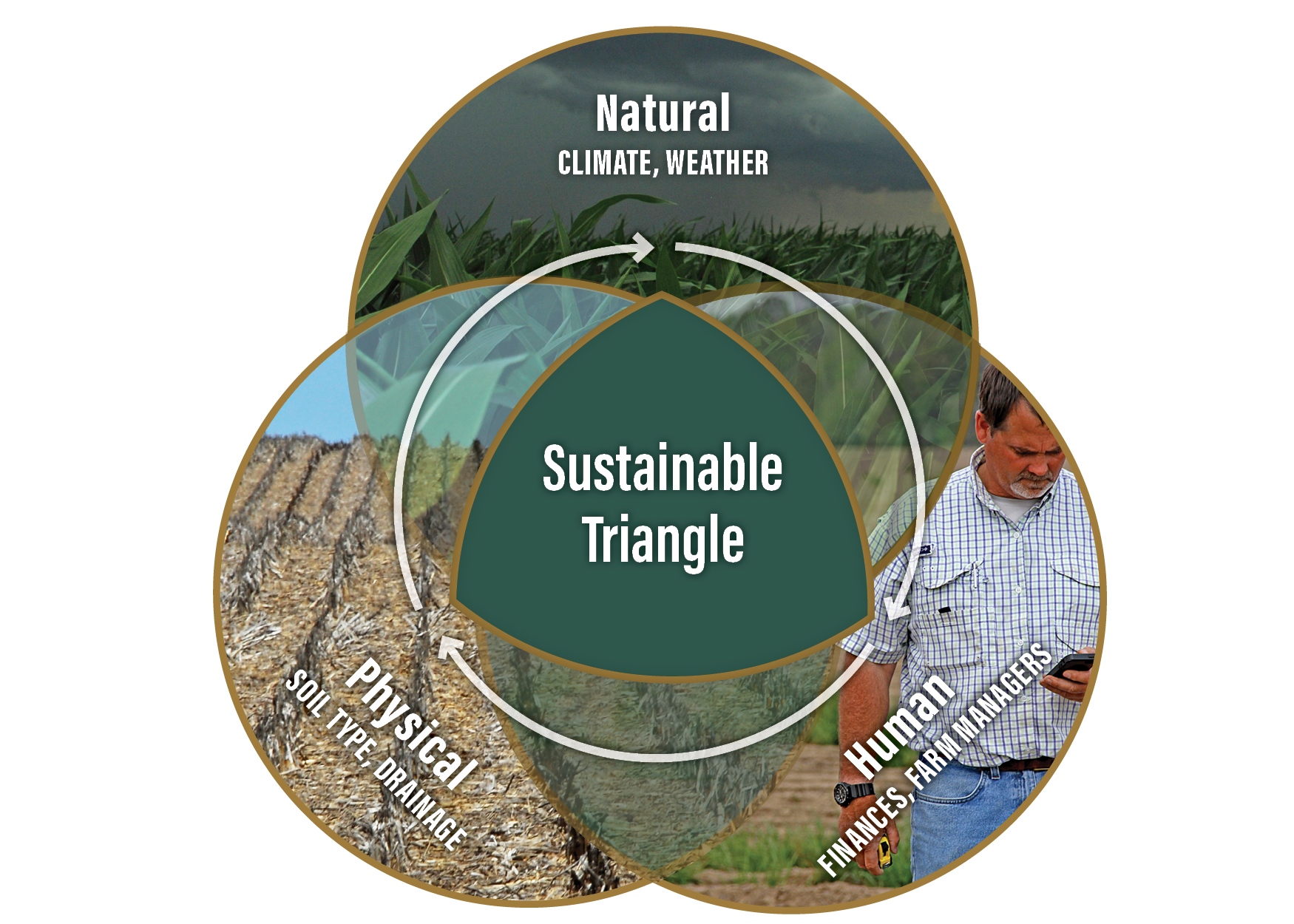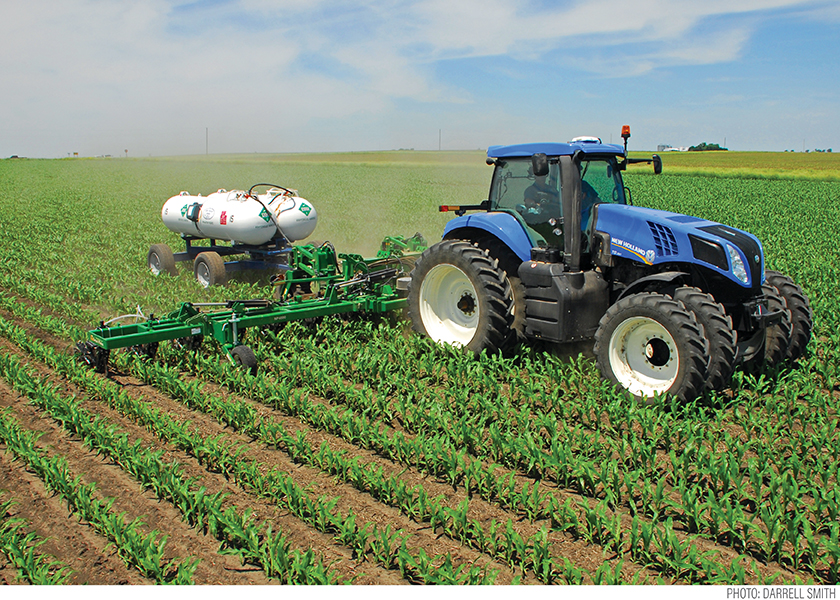Transform Nutrient Regulations from Headaches to Opportunities

 Farming success requires operating inside three environments — natural (weather), physical (conditions in each field) and human. Where they overlap is the Sustainable Triangle.
Farming success requires operating inside three environments — natural (weather), physical (conditions in each field) and human. Where they overlap is the Sustainable Triangle.
As we mentioned last issue, the human environment includes many factors, and one of them — government — is growing more important.
Concern about water quality has spurred nutrient reduction incentive programs and, in some cases, regulations. If you haven’t been affected by one, you probably soon will be.
INCENTIVE VERSUS REGULATION
Nutrient reduction incentive programs can be an opportunity, says Farm Journal Field Agronomist Ken Ferrie, as long as you understand what you are committing to.
But if regulations come to your area, you simply have to deal with them.
“The good news is much of what you will need to do under incentive programs or regulations is exactly what you need to do now on your farm because of high fertilizer costs,” Ferrie says. “And the better your 4R nutrient management program, the easier it will be to adapt it for official incentives or regulations.”
Be prepared to explain your system to your conservation agency staff.
“You may discover your current plan doesn’t meet the requirements of incentive programs or regulations,” Ferrie says. “Those plans use a government form called a Nutrient Management 590 Conservation Practice Job Sheet. Its standards are based on guidelines for your area, such as the Illinois Agronomy Handbook or the Tri-State Fertilizer Recommendations (for Indiana, Ohio and Michigan).”
State guidelines might not incorporate the latest practices, such as zone management and variable-rate application, Ferrie notes.
“Your VRT fertilizer program may be based on years of data from soil maps, topographic maps, electro-conductivity maps, aerial images and yield results, plus your own experience,” he says. “But if the local handbook calls for soil sampling on 2.4-acre grids, and the staff member you’re working with has little actual farming experience, they may want to follow the handbook to make all plans uniform and simplify their task.”
As such, it will be up to you to persuade them your system is more efficient, using patience and tact, Ferrie says.
PRACTICES MIGHT NEED TO CHANGE
You can walk away from incentive programs that cost more than they return, but if your locality adopts regulations, you’ll just have to adjust. And you can, Ferrie says, but it will require changes.
“If you’ve been applying all your nitrogen and phosphorus in the fall, you’ll need to go to multiple, timely applications,” he says. “You may have to start incorporating or strip-tilling phosphorus. Every new operation will require equipment and people, and you may need to turn to custom application.”
But farmers in areas such as the Chesapeake Bay and Lake Erie watersheds are proving they can operate successfully even under regulations, Ferrie points out.
“We have learned having a 4R nutrient management plan and variable-rate application system in place make the transition easier,” he says. “And every nutrient management plan starts with a current soil testing program.”
What to Do Now
- “Develop a 4R nutrient management plan — right product, right rate, right timing and right placement — for each management zone,” Ferrie says. “If possible, implement variable-rate technology (VRT).”
- Make backup plans in case weather throws you a curve.
- Think about how you can modify your plan to meet government standards. Evaluate equipment and labor requirements to implement split application and precise placement of nutrients.
- Test new practices, including cover crops, on limited acreage. “Cover crops will be a big part of incentive programs and regulations,” Ferrie says. “See how they affect your return on investment (ROI).”

What to Do After You Sign Off on a Plan
- Explain your 590 plan to your entire farm team, including your retailer. “Review what you did in the past, and explain why it may not work under a 590 plan,” Ferrie says.
- If new practices are involved, arrange to meet labor and equipment needs.
- Get approval before deviating from your 590 plan. If your conservation staff agrees to a change — because of adverse weather, for example — note the agreement in writing, including the date and the name of the person you spoke to. “Never rely on verbal approval,” Ferrie says. “Failing to document approval for a change could cause you to be found out of compliance and subject to financial penalties.”
- Keep detailed application records. You might need them to prove you followed your 590 plan.
Read more in the “Farming the Sustainable Triangle” series.
Darrell Smith, who’s been with Farm Journal for 40-plus years, works alongside Ken Ferrie to break down the systems approach to farming.







